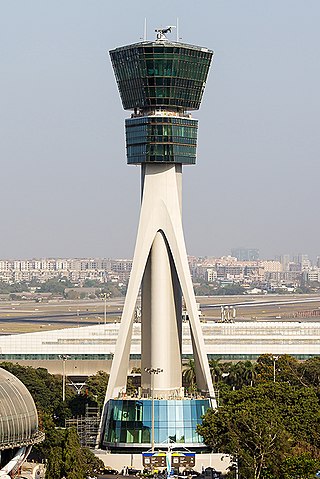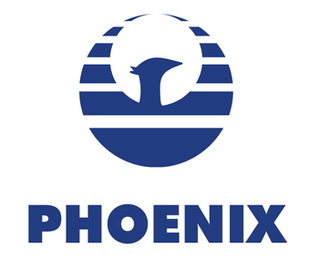Related Research Articles
The Single European Sky (SES) is a European Commission initiative that seeks to reform the European air traffic management system through a series of actions carried out in four different levels with the aim of satisfying the needs of the European airspace in terms of capacity, safety, efficiency and environmental impact.

Air traffic control (ATC) is a service provided by ground-based air traffic controllers (people) who direct aircraft on the ground and through a given section of controlled airspace, and can provide advisory services to aircraft in non-controlled airspace. The primary purpose of ATC worldwide is to prevent collisions, organise and expedite the flow of traffic in the air, and provide information and other support for pilots.
NATS Holdings, formally National Air Traffic Services and commonly referred to as NATS, provides en-route air traffic control services to flights within the UK flight information regions and the Shanwick Oceanic Control Area. It also provides air traffic control services to 14 UK airports.

A traffic alert and collision avoidance system is an aircraft collision avoidance system designed to reduce the incidence of mid-air collision (MAC) between aircraft. It monitors the airspace around an aircraft for other aircraft equipped with a corresponding active transponder, independent of air traffic control, and warns pilots of the presence of other transponder-equipped aircraft which may present a threat of MAC. It is a type of airborne collision avoidance system mandated by the International Civil Aviation Organization to be fitted to all aircraft with a maximum take-off mass (MTOM) of over 5,700 kg (12,600 lb) or authorized to carry more than 19 passengers. CFR 14, Ch I, part 135 requires that TCAS I be installed for aircraft with 10-30 passengers and TCAS II for aircraft with more than 30 passengers. ACAS/TCAS is based on secondary surveillance radar (SSR) transponder signals, but operates independently of ground-based equipment to provide advice to the pilot on potentially conflicting aircraft.

The European Organisation for the Safety of Air Navigation, commonly known as Eurocontrol, is an international organisation working to achieve safe and seamless air traffic management across Europe. Founded in 1963, Eurocontrol currently has 41 member states with headquarters in Brussels, Belgium. It has several local sites as well, including an Innovation Hub in Brétigny-sur-Orge, France, the Aviation Learning Centre (ALC) in Luxembourg, and the Maastricht Upper Area Control Centre (MUAC) in Maastricht, the Netherlands. The organisation employs approximately two thousand people, and operates with an annual budget in excess of half a billion euros.
DO-178B, Software Considerations in Airborne Systems and Equipment Certification is a guideline dealing with the safety of safety-critical software used in certain airborne systems. It was jointly developed by the safety-critical working group RTCA SC-167 of the Radio Technical Commission for Aeronautics (RTCA) and WG-12 of the European Organisation for Civil Aviation Equipment (EUROCAE). RTCA published the document as RTCA/DO-178B, while EUROCAE published the document as ED-12B. Although technically a guideline, it was a de facto standard for developing avionics software systems until it was replaced in 2012 by DO-178C.
RTCA DO-254 / EUROCAE ED-80, Design Assurance Guidance for Airborne Electronic Hardware is a document providing guidance for the development of airborne electronic hardware, published by RTCA, Incorporated and EUROCAE. The DO-254/ED-80 standard was formally recognized by the FAA in 2005 via AC 20-152 as a means of compliance for the design assurance of electronic hardware in airborne systems. The guidance in this document is applicable, but not limited, to such electronic hardware items as
Software safety is an engineering discipline that aims to ensure that software, which is used in safety-related systems, does not contribute to any hazards such a system might pose. There are numerous standards that govern the way how safety-related software should be developed and assured in various domains. Most of them classify software according to their criticality and propose techniques and measures that should be employed during the development and assurance:
The Future Air Navigation System (FANS) is an avionics system which provides direct data link communication between the pilot and the air traffic controller. The communications include air traffic control clearances, pilot requests and position reporting. In the FANS-B equipped Airbus A320 family aircraft, an Air Traffic Services Unit (ATSU) and a VHF Data Link radio (VDR3) in the avionics rack and two data link control and display units (DCDUs) in the cockpit enable the flight crew to read and answer the controller–pilot data link communications (CPDLC) messages received from the ground.
Controller–pilot data link communications (CPDLC), also referred to as controller pilot data link (CPDL), is a method by which air traffic controllers can communicate with pilots over a datalink system.

Transport in the European Union is a shared competence of the Union and its member states. The European Commission includes a Commissioner for Transport, currently Adina Ioana Vălean. Since 2012, the commission also includes a Directorate-General for Mobility and Transport which develops EU policies in the transport sector and manages funding for Trans-European Networks and technological development and innovation, worth €850 million yearly for the period 2000–2006.
Single European Sky ATM Research (SESAR) is a collaborative project to completely overhaul European airspace and its air traffic management (ATM). The actual program is managed by the SESAR Joint Undertaking as a public–private partnership (PPP).
The Single European Sky ATM Research 3 Joint Undertaking is an institutionalised European public-private partnership, established in 2021, to accelerate through research and development the delivery of the Digital European Sky, as part of the SESAR project. Initiated in 2004, the SESAR project is the technological arm of the EU's Single European Sky initiative to integrate EU Member States' ATM systems. Bringing together the EU, Eurocontrol, and more than 50 organisations covering the entire aviation value chain, including drones, this European partnership is investing more than EUR 1.6 billion between now and 2030 to accelerate, through research and innovation, the delivery of an inclusive, resilient and sustainable Digital European Sky.

PHOENIX is a multipurpose Radar Data Processing System(RDPS) / Surveillance Data Processing System (SDPS) - a.k.a. tracker - used for many ATC applications in the Deutsche Flugsicherung (DFS), and is continuously extended and maintained ever since. PHOENIX is also foreseen as a fundamental component for all future ATM systems in the DFS into the 2020s and part of the DFS initiative for “ATS componentware” in the European SESAR programme.

ARTAS is a system designed by Eurocontrol to operationally support Aerial surveillance and Air traffic control by establishing an accurate Air Situation Picture of all traffic over a pre-defined geographical area and then distributing the relevant surveillance information to a community of user systems.
Airport Collaborative Decision Making is the implementation of the CDM process for enhancing the airport turnaround and fostering collaboration between the stakeholders. Collaborative Decision Making (CDM) is defined by the International Civil Aviation Organization (ICAO) as a process applied to support other activities such as demand/capacity balancing. CDM can be applied across the timeline of activities from strategic planning to real-time operations. CDM is not an objective but a way to reach the performance objectives of the processes it supports. The various industry stakeholders are supporting A-CDM optimization, such as ACI World, CANSO, and IATA.

CIMACT is EUROCONTROL's Civil-Military Air Traffic Management Co-ordination Tool.
Remote and virtual tower (RVT) is a modern concept where the air traffic service (ATS) at an airport is performed somewhere other than in the local control tower. Although it was initially developed for airports with low traffic levels, in 2021 it was implemented at a major international airport, London City Airport.
Frequentis is an Austrian high-tech company that develops communication and information systems in fields such as air traffic management and public safety & transport.

Estonian Air Navigation Services, abbreviated as EANS, is a modern, rapidly developing company operating under the auspices of the Ministry of Economic Affairs and Communications of the Republic of Estonia. It is a business entity, the major function of which is to provide services to air traffic in accordance with international standards as well as to ensure flight safety in Tallinn Flight Information Region. The sole owner of the company shares is the Republic of Estonia.
References
- ↑ ED-153 - Guidelines for ANS Software Safety Assurance https://eshop.eurocae.net/eurocae-documents-and-reports/ed-153/
- ↑ EUROCONTROL: "Determining the benefit and costs of centralised services", Skyway Magazin, Winter 2013, pp.41. https://issuu.com/eurocontrol/docs/skyway_winter_2013_single_pages/41 Retrieved on 8 September 2020.